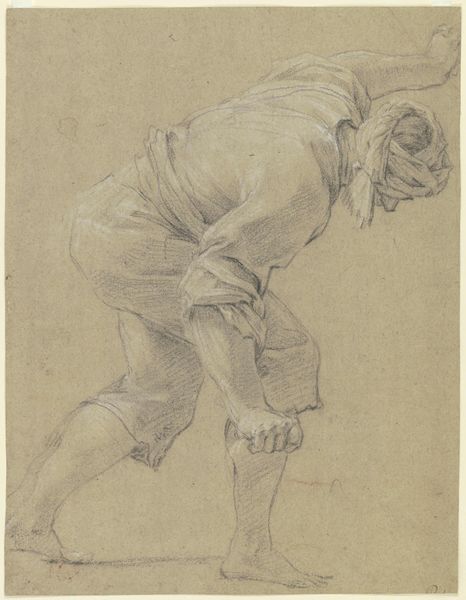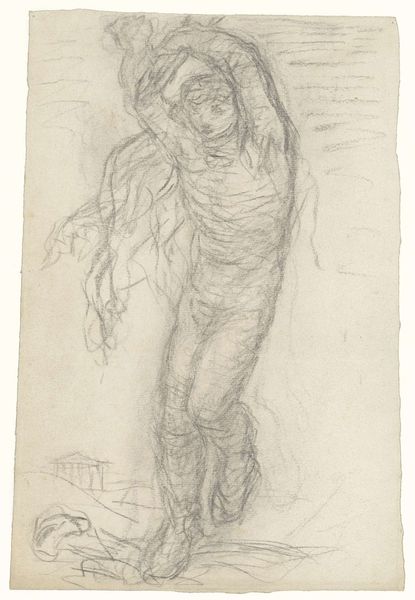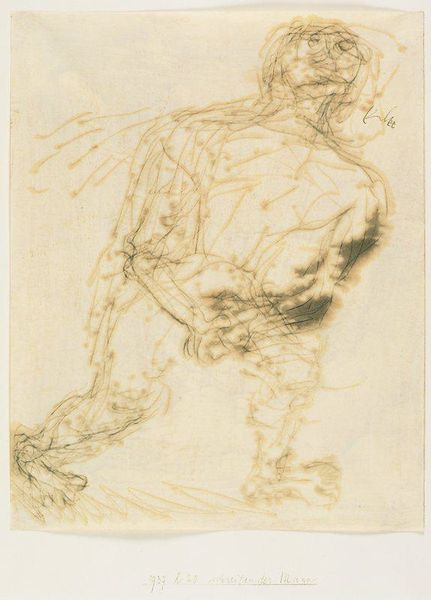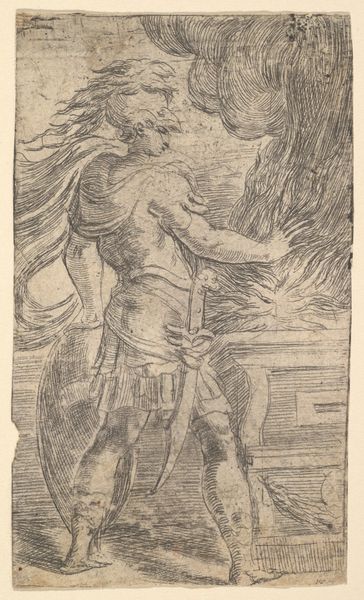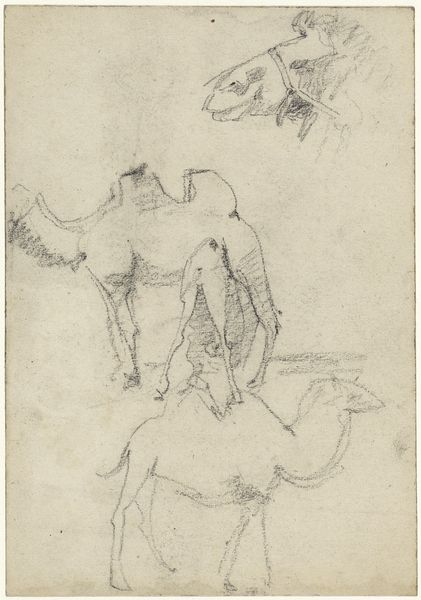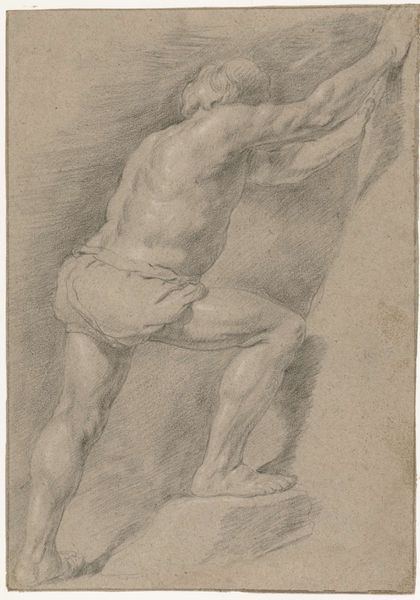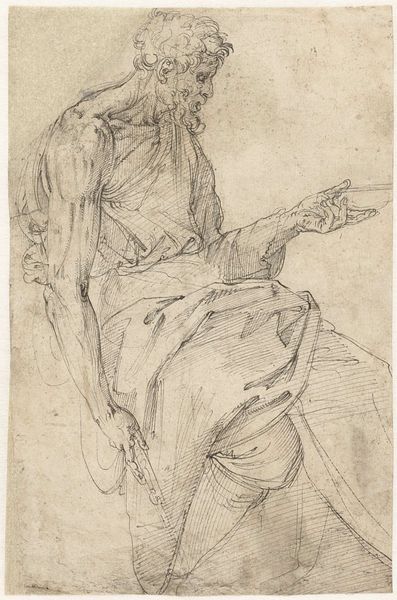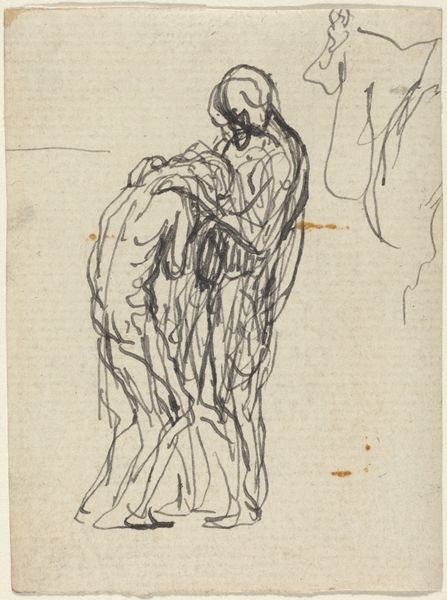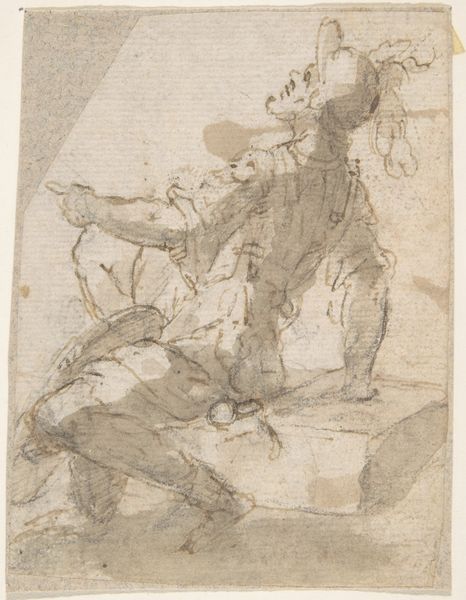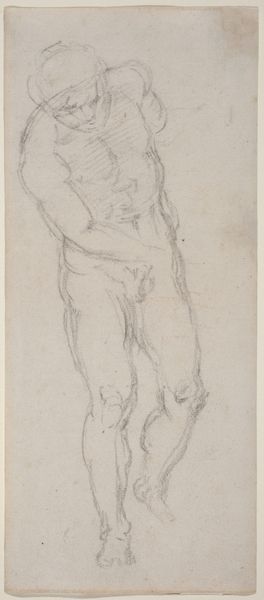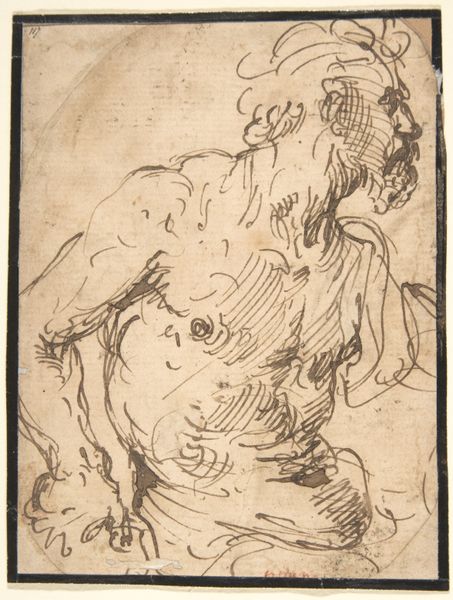
drawing, pencil
#
portrait
#
drawing
#
pencil sketch
#
figuration
#
pencil
#
italian-renaissance
Dimensions: height 163 mm, width 153 mm
Copyright: Rijks Museum: Open Domain
Domenico Tintoretto sketched this drawing of a bending male nude, with charcoal on paper, sometime between the late 16th and early 17th centuries. As the son of the celebrated painter Jacopo Tintoretto, Domenico operated within the established norms of Renaissance artistic tradition. But the twist of the torso here might suggest an alternative to the established form. The male nude in art history often symbolized ideal beauty, power, and virtue. However, looking closely, Domenico’s figure seems caught in a moment of strain or imbalance. This tension perhaps reflects the artist's own negotiation of identity, caught between the expectations of his lineage and his individual artistic expression. The deliberate rendering of the male form becomes a site where ideals are both upheld and questioned. What does it mean to portray the male form not in triumphant strength, but in a moment of vulnerability?
Comments
No comments
Be the first to comment and join the conversation on the ultimate creative platform.
